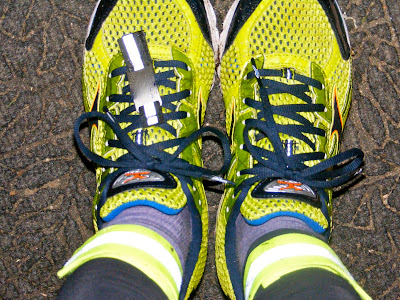What Happens To Your Body When You Become "Heat Adapted"?
Enjoy this guest post from #30SaltyDays!
Do you know what happens when you become “heat-adapted?” You may notice you sweat more, or that your sweat tastes less salty. These are the results of your body becoming more efficient at cooling itself in the heat.
Knowledge is essential to training success, so we thought we would share some insights about the heat adaptation process with you, to help you better prepare for hot races this summer.
A little background:
Humans have studied the biological response to hot and cold environments as far back as the 1840s. A German biologist named Carl Bergmann noted that mammals tended to have large body mass relative to surface area (think dense, like a polar bear) when located in colder climates. However, mammals in warm climates tended to be tall or long and thin (think dainty, like a gazelle) in hot climates. Bergmann’s work has been referenced and improved upon since his initial work in 1847, and we now see a correlation between low-volume/high-surface-area and temperature. This is why people with nordic heritage are usually shorter and stockier than Ethiopian marathoners, who are whippet-thin and long-legged.
Of course, these studies reveal human adaptation to heat over long periods of time, which doesn’t help if you’ve got a marathon two months from now. Luckily, the human body is very good at adapting to climates -- both hot and cold -- in relatively little time. Most experts agree it takes at about two weeks of moderate exercise in the heat to fully adapt to the new climate.
Here’s what happens in the heat-adaptation process:
- Your sweat changes: Many people who exercise in a hot environment for the first time are shocked at the saltiness of their sweat. However, as the body becomes more adapted, sodium levels in sweat lower, and sweat will be less salty. There will also be more of it, especially if you workout in humid environments. As we explained in our recent blog post about dry vs. humid conditions, contrary to popular belief, your body will actually sweat more in humid environments. Sweat is only effective if it evaporates off your skin, so your body tries to maximize the surface area available for evaporation by increasing sweat rates.
- Your blood changes: One major change in blood composition involves increased plasma volume. Plasma is mostly water, and it’s basically everything in your blood other than the actual blood cells. More plasma means more total blood volume, which helps the body move heat to the surface and transport essential nutrients, such as glucose and oxygen to your hardworking muscles.
- Your blood vessels change: In the winter, blood capillary density is reduced, in order to prevent heat from leaving through the skin. In the summer, the exact opposite happens -- blood vascularity near the surface of the skin increases so that the body can release heat by letting blood pool near the skin. This is the reason you may experience hand-swelling and turn red in the face during exercise.
- Your thinking changes: A 1997 study found that part of heat adaptation includes psychological changes as well. In addition to increased blood flow and sweat rates, researchers found that training in the heat helped reduce perceived efforts and perceived “thermal discomfort.” Essentially, as we become heat-adapted, we get better at mentally dealing with the stress of hot environments.
Key takeaways: What can you do to help your body adapt?
It’s important to realize that the adaptation process doesn’t happen overnight. As we said above, heat-adaptation takes about two weeks. While you are transitioning, keep these things in mind to make the transition easy:
- Maintain bodily awareness: The last thing you want to do is rush the process and go too hard. This will result in heat stress that lasts more than 24 hours; in fact, some studies have found that the negative effects of “overdoing it” in the heat can last for several weeks! It’s important to push yourself, but take extra caution during the adaptation process to avoid going overboard.
- Realize everything will feel more difficult: Working out in the heat is analogous to working out with a 50-lb weighted vest: it’s much harder! Do not be surprised if your perceived effort is much higher than normal. In fact, you should expect it. As your body becomes more adapted, it will get easier to push it in the heat.
- Be consistent: Sadly, as easy as it is to gain heat adaptations, it is even easier to lose them. If you don’t consistently workout in the heat, your adaptations in plasma volume and higher sweat rates will disappear.
- Use mental techniques to prepare for the psychological side: Many running coaches have their athletes practice mental training strategies as physical workouts. These include visualization, practice “listening to the body,” and patience (avoiding the desire to push too hard in early-season workouts). Before you begin your workout, stop and think about what is ahead. Realize that if it’s hot, you will not be able to run as fast. Just because you cannot run as hard in 95° weather as you can in 55° weather, it does not mean you have failed.
As you continue to progress in your training this summer, keep the above tips in mind. Heat adaptation is like training for a marathon -- consistency is key; positivity is key; determination is key. Take it step by step each day, and you will be amazed at what your body can do!



Comments
Post a Comment
Please comment and I will respond!